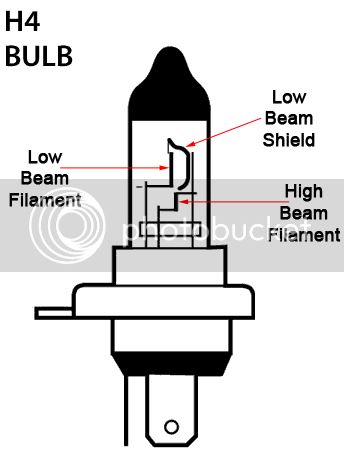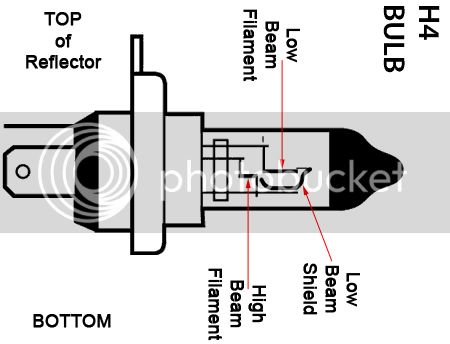RossKean
Well-known member
We will expect a detailed report with pictures on Sunday.i bought those, will be delivered saturday.

We will expect a detailed report with pictures on Sunday.i bought those, will be delivered saturday.
Ah, the forum works in mysterious ways. Now that you've decided to lead, I'm looking forward to your review.i bought those, will be delivered saturday.







I just swapped out my 2 year old NB +'s for the newest NB Ultimate's last Saturday. Though the +'s were still fine, they had about 400 hours on them so I figured I'd be proactive and get to 'em before any burnouts. I really wasn't expecting too much difference from the new ones despite the advert. hype and had been very satisfied with the +'s light output. Man, was I surprised. The Ultimate's are a FANTASTIC bulb! Noticeably brighter and whiter than even the +'s with a great wide and full beam pattern. For a halogen option these are EXCELLENT! Hopefully they'll last at least 400 hours as well.You mention the Night Breaker bulbs that I just got done fondling.Thanks for that find. Looks looks I'll be staying with the newest Philips or Osram premium halogen bulbs when my Night Breaker Plus' burn out. Happy enough with those, was hoping for even better from LED's.I just had my right low beam go out after being installed for the past 4 years. The stock bulbs seem to last a long time, but the Osram Night Breaker bulbs throw more usable light down the road so the shorter life is worth it to me. BTW, the original Osram Night Breaker bulbs only lasted 9 months and 1 year respectively, but the replacements were labeled PLUS for longer life and my experience confirmed over 4 times the life. We'll see how long the left one still burns, but I ordered another set from www.powerbulbs.com to be prepared for what I predict to be at most another 3 months before it goes.
I suppose if the LED bulbs get the bugs worked out, I'll be using those 4 years from now.
For some great reading on aftermarket bulbs, check out: https://www.danielste...ulbs/bulbs.html .
Thanks Iggy. FYI folks, we're going to have an great deal on LED H4's coming up for FJR forum folks. We've taken our time bringing LED headlight replacements to market, as we've been doing a lot of testing of different variations. We are very happy with the latest versions we've been testing and will be proceeding with them in our product line. We have a number of test units out there on FJR's and feedback has been positive. I run them on my FJR as well. More info and pictures are available on our Facebook page: https://www.facebook.com/ledmotorcyclelightsI actually wouldn't say that...and certainly didn't mean it. It isn't one of the few that's not very findable using either the forum search engine or Google in this case (because of a forum-technical reason). Short words like "LED" and "H4" ARE tougher to search on! In fact, I found it from memory that Justin's increasingly the go-to guy for LED lighting options. So, let it be know the search nazi isn't impervious.

Thanks Iggy. FYI folks, we're going to have an great deal on LED H4's coming up for FJR forum folks. We've taken our time bringing LED headlight replacements to market, as we've been doing a lot of testing of different variations. We are very happy with the latest versions we've been testing and will be proceeding with them in our product line. We have a number of test units out there on FJR's and feedback has been positive. I run them on my FJR as well. More info and pictures are available on our Facebook page: https://www.facebook.com/ledmotorcyclelightsI actually wouldn't say that...and certainly didn't mean it. It isn't one of the few that's not very findable using either the forum search engine or Google in this case (because of a forum-technical reason). Short words like "LED" and "H4" ARE tougher to search on! In fact, I found it from memory that Justin's increasingly the go-to guy for LED lighting options. So, let it be know the search nazi isn't impervious.
Here's a teaser of the color options:

I run one of each on my FJR. Makes you stand out since it looks different, and gives a wider light spectrum for better definition.
A few things to keep in mind about LED headlight replacements:
1 - They will not compare to HIDs for raw output. They offer a marginal increase over halogens, while freeing up a lot of watts and lasting much longer.
2 - If they don't have a fan, don't bother. Any LED headlight unit that doesn't have a fan will either have very low light output, or, it will deteriorate quickly in performance due to heat. LEDs don't like heat. And without a fan the chip will deteriorate quickly. Fins can't get enough heat of the units quickly enough when enclosed in a headlight housing.
3 - Don't be fooled by ads that advertise 30,000-50,000 hour life spans. Yes, the LEDs will last that long, but, they deteriorate over time, even with proper cooling. The units we've been testing are at 98% output between 3000-5000 hours. High output halogens last 400-600 hours, and standard halogens up to 900-1000 hours (for long life bulbs). We suggest replacing at about 4000 hours, so it's still a big improvement on lifespan.
I'll have a thread posted up next week with more details in the group buy section. Been busy getting ready to move tomorrow, so I haven't had a chance to get the deal posted up yet.


Slight... but in normal use, the "top" of the headlight reflector would be to the "left" in the picture above...
I was fairly certain I had correctly described the typical H4 configuration, so I just checked my bike along with every car in the parking lot...the low-beam shield is below the filament, blocking the bottom half of the reflector. This prevents any light from the low-beam filament from reflecting "up" and blinding oncoming traffic. The following IS the correct orientation of the bulb in a headlight housing.Slight... but in normal use, the "top" of the headlight reflector would be to the "left" in the picture above...correction, top to the right, so the shield is on the bottom.

You are absolutely right. In my senility I read your post as 'the top of picture would be to the left'. Note that in my stupid post, I did say the shield is on the bottom.I was fairly certain I had correctly described the typical H4 configuration, so I just checked my bike along with every car in the parking lot...the low-beam shield is below the filament, blocking the bottom half of the reflector. This prevents any light from the low-beam filament from reflecting "up" and blinding oncoming traffic. The following IS the correct orientation of the bulb in a headlight housing.[img=[URL="https://i5.photobucket.com/albums/y161/radiohowie/H4b_zpsaef5bf92.jpg%5D"]https://i5.photobucket.com/albums/y161/radiohowie/H4b_zpsaef5bf92.jpg][/URL]Slight... but in normal use, the "top" of the headlight reflector would be to the "left" in the picture above...correction, top to the right, so the shield is on the bottom.

Fred, this is exactly how the H4 LED conversions work, i.e., the high-beam LED is powered-on (lit) at the same time as the low-beam LED. Both emitters light up, providing light from both sides of the unit to the reflector, to be cast down the road.This is exciting.
So, the best way to run the H4 LED conversion lamps would be (unlike the H4 Halogens) to run the upward emitting LED only while in low beam mode, but to then run both Up and down LEDs when in high beams!! This is brilliant!! (sorry for the bad pun) as it will eliminate one of the major foibles of the FJR headlamp buckets from day one, lack of foreground illumination on high beam.
I think that's why SO many FJRs seem to have their headlights aimed too high...to get the "correct" low-beam, the high-beam is simply too high. But with the high-beam set "just right" you get a "dark spot" in front of the bike.Even with the halogen lamps (that it was designed for) the high beam was always pretty bad because it shifted all of the light up too high, into too small of a vertical range that the reflector was focused at, and it left the foreground nearly dark. I understand the idea that you do not want too much scatter or foreground illumination when on high beam as it diminishes your distance vision, but it was excessively focused previously, and this seems like the panacea of FJR lighting.
I don't think that would be an issue with these LEDs. They (through their own "ballast") provide power to both emitters. The big fly in the ointment is the high-beam emitters just don't function the same as high-beam H4 halogens or HIDs. It's not the quality of the light...it's the quantity.It will require rewiring your bike slightly since the headlight relays will only want to run either the high or low beam LEDs, but with the reduced power consumption of LEDs we should have plenty of overhead power capacity to run both LEDS simultaneously and still be below the draw of the 55W halogen high beams alone.
Enter your email address to join: